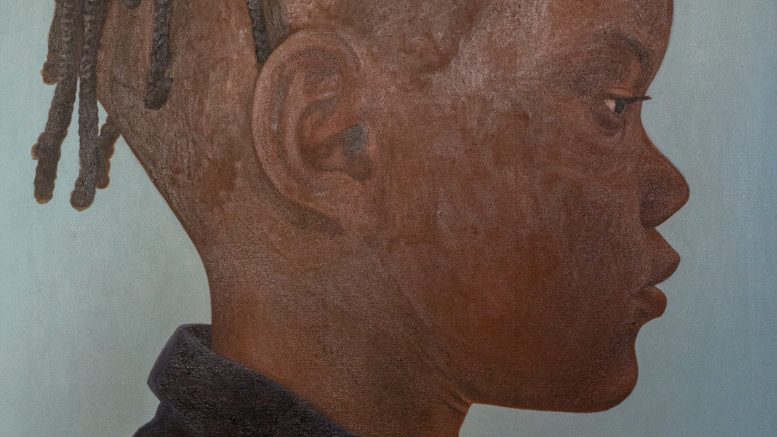On Feb. 8, the Winnipeg Art Gallery (WAG-Qaumajuq) will present Threads of Kin and Belonging. Curated by Julia Lafreniere and Elliott Walsh (also known as Nestor Wynrush), the exhibit is described as “an intervention and conversation between Indigenous Nations and Black communities on Treaty One Territory.” Notably, the exhibition will open during Black History Month and will include a rooftop celebration on National Indigenous Peoples Day on June 21.
Lafreniere, who is Michif and Anishinaabe from the Minegoziibe Anishinabe First Nation, has been the head of learning, Indigenous ways and equity at the Winnipeg Art Gallery since 2019. In June 2024, she completed a master’s degree in cultural studies with a curatorial focus.
“I consider myself an emerging curator,” said Lafreniere. “Occasionally projects come up where I feel compelled to submit a proposal to the WAG, an exhibition proposal, and this was one of them.”
Walsh is an emcee, writer, workshop facilitator and organizer. His background is primarily in music, with a focus on telling stories of the African-Caribbean diaspora.
“This is just another vehicle, and I’ve been given the opportunity to I guess be mentored by Julia Lafreniere and Marie-Anne Redhead, who are […] teaching me a lot about the art institution world,” Walsh said.
According to Lafreniere, the theme and story of the exhibition are constantly evolving.
“It’s a conversation between Black folks and Indigenous folks,” she said. “It started long before us and it’ll continue long after us. So, we just wanted to create a visual art representation of care and belonging and home, and how when we lead with care and love to each other, that we’re able to accomplish or exist in a better way.”
Threads of Kin and Belonging is part of the fourth annual Trinnipeg Live Mixtape, founded by Walsh. The program has taken various forms over its history, with a consistent focus on community, collaboration, communication and learning — primarily through music.
“We’ve worked with almost, I’d say about 50, maybe 60 artists, in different forms, like in music, visual arts, curators, it’s been wild. It’s been great, actually. And just bridging gaps on the prairies, especially,” Walsh said.
Once Lafreniere and Walsh received funding and support for the exhibition, they searched the WAG collection for artworks that fit the theme. Along with these pieces, they secured loaned artworks from private collections and local artists.
“When you realize how little Black and Indigenous, First Nations and Métis art that there is at the WAG in comparison to everything else, it became very clear that a real search had to take place,” said Walsh. “There’s so many good and great local artists […] A show like this is wonderful, because you get to support these artists that rarely get to be shown inside of spaces like this.”
Lafreniere said she hopes Indigenous, Black and other minority communities see themselves positively reflected in the exhibition.
“I hope that they come into the exhibition and feel like they’re home, and I hope they leave feeling empowered and loved and cared for,” she said.
Walsh agreed, adding that he hopes the exhibit fosters an atmosphere of learning and celebration.
“Learning something new about where they live, and celebrating learning these things — it’s a celebration, but also a humble learning process, while being in the midst of all this great art,” he said. “This is just one chapter of this ongoing conversation that has gone on beforehand as well, and it’s just a pleasure to be a part of.”
Threads of Kin and Belonging will open Feb. 7, with a free event beginning at 7 p.m., and run until Sept. 30. For more information, visit wag.ca/exhibitions/threads-of-kin-and-belonging.


